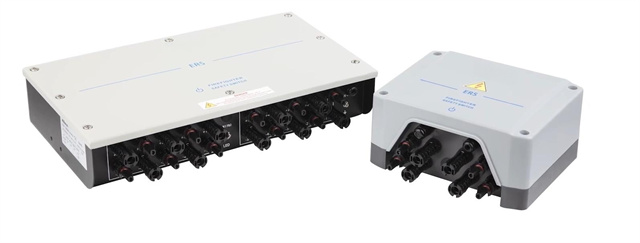Author:BLD Solar Energy SystemFROM:Solar System Converter Manufacturer TIME:2023-08-29
Technical Features of Rapid Shutdown NEC Technology

Rapid shutdown is an essential safety feature in the solar photovoltaic (PV) industry, ensuring that PV systems can be quickly and safely de-energized in cases of emergency or maintenance. The National Electrical Code (NEC) has specific requirements for rapid shutdown to enhance the overall safety of PV installations. This article will explore the technical features of rapid shutdown NEC technology and its significance in the PV industry.

The first key technical feature of rapid shutdown NEC technology is the centralized shutdown controller. This component acts as the brain of the system, coordinating the shutdown process. It connects to all the rapid shutdown devices in the PV system and sends signals to initiate shutdown when necessary. The centralized shutdown controller ensures a synchronized and efficient shutdown, minimizing the risk of electrical hazards during emergency situations.

Another crucial aspect of rapid shutdown NEC technology is power line communication. Power line communication allows the centralized shutdown controller to communicate with the rapid shutdown devices over the existing wiring infrastructure of the PV system. This eliminates the need for additional communication cables, simplifying installation and reducing costs. Power line communication also enables real-time monitoring of the system, providing valuable feedback on the status of the rapid shutdown devices.
Rapid shutdown NEC technology incorporates safe harbor requirements to ensure the effectiveness and reliability of the system. Safe harbor requirements define the permissible distance between the rapid shutdown devices and potential access points, such as the edge of the roof or the ground. These requirements mitigate the risks associated with electric shock or fire by minimizing the voltage levels present in accessible areas during shutdown. Compliance with safe harbor requirements is critical for PV installations to meet the necessary safety standards.
In conclusion, rapid shutdown NEC technology plays a vital role in enhancing the safety of solar PV systems. The centralized shutdown controller, power line communication, and safe harbor requirements are key technical features that contribute to the efficiency and reliability of the system. Implementing rapid shutdown NEC technology ensures that PV systems can be quickly and safely de-energized when emergencies occur, protecting both individuals and property. As the solar industry continues to grow, the adoption of rapid shutdown NEC technology will become increasingly important to maintain the highest safety standards.
